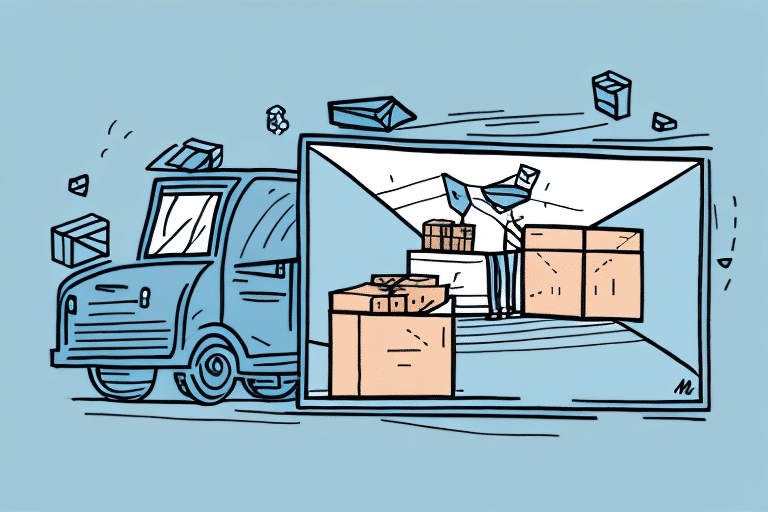Delivery Promises: Boosting Ecommerce Conversion Rates
As online shopping continues to surge in popularity, ecommerce stores must differentiate themselves to stay competitive. A pivotal factor in this differentiation is the delivery promise made to customers. By setting realistic and achievable delivery expectations, ecommerce businesses can enhance conversion rates, build trust, and foster customer loyalty. This article explores the significance of delivery promises, strategies to set and communicate them effectively, best practices for fulfillment, and more.
Importance of Delivery Promises in Ecommerce Success
Customers expect convenience and speed when purchasing online. Failing to meet these expectations can lead to cart abandonment and lost sales. Clear and achievable delivery promises not only increase customer satisfaction but also reduce the likelihood of cart abandonment. Reliable shipping carriers and multiple delivery options, such as expedited or standard shipping, provide customers with flexibility and confidence in their purchases.
Considering the customer's location is essential, as shipping times can vary based on distance. Offering estimated delivery times tailored to different regions enhances the personalized shopping experience.
Psychology Behind Delivery Promises and Conversion Rates
Delivery promises cater to customers’ desires for instant gratification and control. By providing estimated delivery dates, ecommerce stores alleviate anxiety associated with waiting for orders, leading to higher satisfaction and increased conversion rates. Transparency and realism in delivery promises are crucial; overpromising and underdelivering can damage trust and reduce conversions.
Effective communication regarding any delays or issues is vital to maintaining customer trust and loyalty. Prompt updates and honest messaging help preserve the customer relationship even when challenges arise.
Setting Realistic and Achievable Delivery Promises
Balancing customer expectations with logistical capabilities is key to setting effective delivery promises. Offering multiple delivery options—such as standard, expedited, and same-day delivery—allows customers to choose based on their needs and budget. Utilizing data analysis to determine average delivery times for specific products ensures promises are based on actual performance metrics.
Additionally, adjusting delivery promises based on customer location, especially for international orders, accounts for longer shipping times or potential customs delays. Transparent communication about any possible delays helps manage customer expectations and sustain brand trust.
Effective Communication of Delivery Expectations
Clearly communicating delivery promises is essential for managing customer expectations and preventing disappointment. This includes displaying delivery options on product pages, confirmation emails, and order status updates. Providing tracking information enables customers to monitor their orders, enhancing transparency and trust.
Offering a range of delivery options caters to diverse customer preferences, whether they prioritize speed or cost savings. This flexibility improves the overall shopping experience and can lead to higher customer satisfaction and loyalty.
Building Trust and Loyalty Through Delivery Promises
Consistently meeting delivery promises fosters trust and loyalty, leading to repeat business and positive reviews. Utilizing customer feedback to refine delivery strategies ensures continuous improvement and better customer satisfaction.
Providing multiple shipping options and real-time tracking information further enhances trust. When customers feel informed and in control, their confidence in the brand grows, encouraging long-term loyalty.
Best Practices for Fulfilling Delivery Promises
- Partner with reliable carriers to ensure timely deliveries.
- Maintain adequate inventory to prevent stockouts and delays.
- Proactively communicate any delays or issues to customers.
- Provide accurate tracking information to keep customers informed.
- Offer multiple shipping options to meet diverse customer needs.
- Invest in quality packaging to prevent damage during shipping.
Additionally, excellent customer service throughout the purchasing process, including hassle-free returns and personalized experiences, enhances customer satisfaction and reinforces delivery promises.
Role of Technology in Enhancing Delivery Speed and Accuracy
Technology plays a crucial role in optimizing delivery speed and accuracy. Tools such as automated inventory management, shipping software, and route optimization streamline operations and minimize errors. Technologies like RFID tags and barcode scanners improve accuracy and expedite product processing.
Innovative solutions such as drone delivery and autonomous vehicles are being explored by companies like Amazon and UPS to further reduce delivery times in urban areas. Real-time tracking systems provide customers with up-to-date information on their orders, enhancing the overall shopping experience.
Monitoring and Improving Delivery Promise Performance
Regularly monitoring delivery performance helps identify areas for improvement and optimize delivery strategies. Key metrics to track include delivery times, customer satisfaction ratings, and reviews. Utilizing dashboards to display real-time data enables quick identification and resolution of issues.
Analyzing trends and external factors, such as weather or carrier delays, allows ecommerce stores to adapt their strategies and implement contingency plans. Maintaining open communication with customers about their delivery experiences also contributes to continuous improvement and sustained satisfaction.
Case Studies: Successful Delivery Promise Strategies
Successful ecommerce businesses like Amazon and Zappos have leveraged strong delivery promise strategies to drive customer loyalty and boost conversions. Amazon’s Prime program, offering free two-day shipping, has been a significant factor in its customer retention. Zappos is renowned for its exceptional customer service and fast shipping, setting industry standards.
Chewy, an online pet store, offers free one- to two-day shipping on orders over $49 and provides a subscription service for regular deliveries. This consistent fulfillment of delivery promises has cultivated a loyal customer base and driven the company's growth.
Common Mistakes to Avoid in Delivery Promises
Avoiding common pitfalls is essential for maintaining effective delivery promise strategies:
- Overpromising and Underdelivering: Ensure promises are realistic to prevent customer disappointment.
- Poor Communication: Keep customers informed about any delays or issues promptly and transparently.
- Inadequate Tracking Information: Provide accurate and real-time tracking to maintain trust.
- Weak Packaging: Use quality packaging to prevent damage and ensure products arrive in good condition.
- Lack of a Clear Policy: Establish clear policies for handling shipping and delivery issues, including returns and refunds.
Staying updated with industry trends and adapting delivery strategies accordingly helps avoid these mistakes and maintain high levels of customer satisfaction.
Maximizing Conversions by Honoring Delivery Promises
Focusing on consistently delivering on promises is a powerful strategy for maximizing conversions and building long-term customer loyalty. This involves:
- Setting clear and achievable delivery expectations.
- Leveraging technology to streamline delivery operations.
- Continuously monitoring performance and making data-driven improvements.
By prioritizing delivery promises, ecommerce stores can distinguish themselves in a crowded market, driving sustained success and growth.
Impact of Returns on Delivery Promise Strategy
Returns can influence the effectiveness of delivery promise strategies. Ecommerce stores must implement clear return policies, ensuring timely refunds or exchanges and effective communication with customers. Handling returns efficiently mitigates negative impacts on delivery promises and maintains customer trust and loyalty.
Leveraging Customer Feedback to Enhance Delivery Promises
Customer feedback is invaluable for refining delivery promise strategies. Actively soliciting and analyzing feedback helps identify strengths and areas for improvement. Insights gained from customer experiences can guide adjustments to delivery times, technology investments, and communication practices, leading to higher satisfaction and increased conversion rates.
Incorporating customer feedback ensures that delivery promise strategies are aligned with customer expectations and continuously evolving to meet their needs.
Conclusion
Effective delivery promise strategies are essential for ecommerce success. By setting realistic expectations, leveraging technology, communicating transparently, and continuously improving based on feedback, ecommerce stores can enhance customer satisfaction, build trust, and boost conversion rates. In an increasingly competitive online marketplace, mastering delivery promises is a key differentiator for sustained growth and customer loyalty.






















